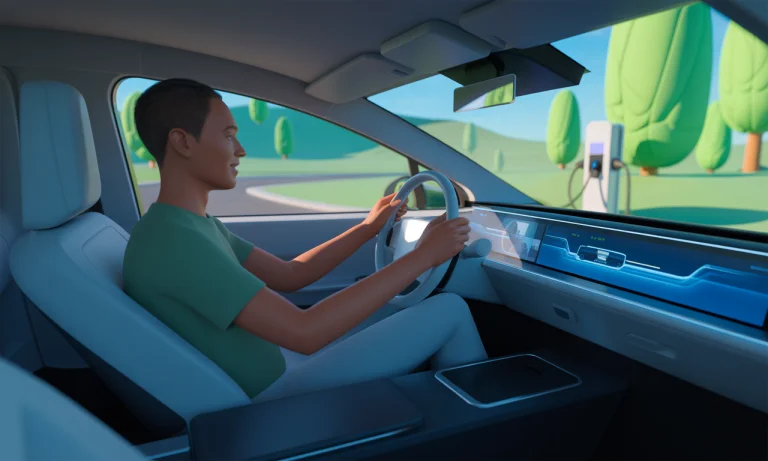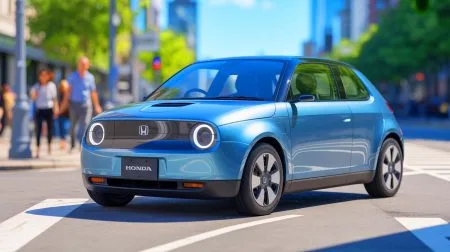Stepping into the future behind the wheel of an electric car isn’t just about adopting new technology—it’s about experiencing an entirely different kind of drive. As models from Tesla to BMW, Nissan to Kia, increasingly become part of everyday life, the curiosity around what truly separates this test drive from a conventional one has never been stronger. The silence that greets you on start-up, the surge of instant torque, and a sleek cabin punctuated by futuristic screens—every detail underlines that you’re riding on the crest of automotive innovation. Preparing for your first electric test drive means more than checking off comfort and style; it opens a gateway into new driving dynamics, advanced safety systems, and a reimagined relationship with range and charging. This comprehensive journey will guide you through what to watch, test and question—from the initial contact with the dealer to your reflections long after the drive ends. In 2025, driving electric is less about trends, more about shaping the road ahead.
Test Driving an Electric Car: Experience the Shift in Automotive Feel
For Alex, a lifelong enthusiast of gasoline engines, the first moments inside a Chevrolet Bolt marked a radical departure. The familiar roar of ignition was replaced with a near-meditative silence—a gentle illumination across the digital dashboard instead of a mechanical rumble. Alex soon realized, like many before, that the process of arranging a test drive is reassuringly familiar. Whether you opt for a Ford Mustang Mach-E, a Hyundai Ioniq, or even a Polestar 2, the dealership will walk you through timing, location, and the all-important paperwork. Don’t forget to bring your valid driving license and ensure you understand insurance coverage, especially any excesses you might incur.
But once seated, the uniqueness of an electric vehicle (EV) becomes unmistakable. Powerful automatics by default, models like the Kia EV6 or Volkswagen ID.4 accelerate with a smoothness and immediacy that redefines expectations—even experienced drivers find the lack of gear changes and engine growls disorienting at first, but soon realize it’s a new standard. Exploring the full tech suite, including touch screens and energy displays, helps demystify smart driving and lets you see how infotainment and range management blend into a single, intuitive experience. Capturing that relaxed yet powerful sensation is something no spec sheet can transmit.
| Vehicle Brand | Unique Test Drive Feature | Technology Highlight |
|---|---|---|
| Tesla | Full self-drive preview | Large touchscreen interface |
| Nissan | e-Pedal one-pedal driving | ProPILOT Assist |
| Chevrolet | Regenerative braking levels | Energy consumption widget |
| BMW | Sport & Eco drive modes | BMW iDrive system |
| Hyundai | Auto high-efficiency cabin preconditioning | Bluelink connected services |
| Kia | Augmented reality head-up display | Battery usage analytics |
| Volkswagen | Dual-motor all-wheel-drive test | Intuitive ID.Cockpit |
| Audi | Virtual mirror trial | MMI touch response |
| Polestar | Google assistant integration | Simplified instrument cluster |
To learn what else makes these EVs stand out, this comprehensive guide on test-driving will help you compare models and plan smarter questions for your dealership visit.
The Feeling of Electric Performance: Acceleration, Braking and Handling
On Alex’s test route, anticipation swelled at the promise of instant torque. Unlike the gradual build of a combustion engine, the Chevrolet delivered power without hesitation—a subtle, barely audible hum carrying the car forward. Those first seconds illustrated the heart of electric driving: acceleration that redefines urban traffic lights as opportunities to outpace the ordinary, while ultra-responsive controls enable a confidence unique to this new technology. From Audi’s Quattro e-tron stability to Ford’s Mustang Mach-E, each brand capitalizes on heavyweight batteries placed low in the chassis, anchoring the drive and lending remarkable agility through corners.
The next revelation? Regenerative braking. Lifting off the accelerator, Alex felt a gentle, controlled deceleration—energy recycled back to the battery rather than burned away as heat. Testing different driving modes, he experienced the extremes, from feather-light coast to the sharp, almost dramatic stop of “one-pedal driving,” featured in both Nissan and Tesla vehicles. It felt odd at first, but the convenience during stop-and-go traffic quickly became clear, particularly for city dwellers wanting less fatigue and more efficiency. More on advanced regenerative technology is covered in this resource on electric car battery innovation.
| Driving Mode | Description | Best For |
|---|---|---|
| Standard | Balanced acceleration and braking | Mixed daily driving |
| Eco | Reduced throttle, maximum regen | Maximizing range |
| Sport | Sharper response, minimal regen | Performance driving |
| One-Pedal | Strong regeneration, minimal brake use | Heavy city traffic |
Want strategies for longer trips or highway feel? This practical guide on preparing electric cars for long road trips sheds light on making the most out of every charge.
Cabin Technology, Comfort, and Connectivity in Your Electric Test Drive
There’s something liberating about the low hum and the tech-laden silence of the cabin when you pilot an Audi e-tron or a Volkswagen ID.4. Inside, space seems abundant. The omission of a bulky transmission tunnel gifts rear passengers extra foot room, and the panoramic glass rooftops—especially in a Polestar or a Hyundai—invite the sky without intrusion. Exploring the controls, Alex marveled at the crisp touchscreens displaying everything from real-time navigation to nuanced energy analytics. Making or taking a phone call—or checking battery health—felt closer to using a smartphone than traditional dashboard fiddling. For infotainment fans, seamless Apple CarPlay or Android Auto integration is now commonplace, turning every test drive into a rolling tech showcase.
The comfort isn’t just in tech, but in quiet. Acoustic glass and insulated doors, especially in BMW and Audi models, dampen outside noise to highlight crisp audio or casual conversation. Range estimates are front and center—changing in live time with your driving. For buyers of used electric cars, this figure is crucial: comparing dashboard estimations to the actual road distance reveals the true health of a second-hand battery. The detailed steps for a full EV inspection are itemized in this car inspection checklist, while advice on what to look for in a used electric car is found here.
Range, Charging, and Real-Life Practicality: What Matters After the Test Drive
With the excitement of new technologies fading, practical questions remain. Will the estimated range get you through your week? Do public chargers in your town play well with a Kia Niro EV or a Ford F-150 Lightning? The learning curve often continues after the drive: Alex made sure to simulate a charging stop, testing out cable handling and peeking at cost breakdowns per recharge. Sales reps are increasingly prepared for technical questions, armed with apps to demonstrate public charging station compatibility—whether you’re at home, workplace, or traveling further afield.
The cost comparison to gasoline, once the stuff of spreadsheets, is now a straightforward dashboard summary in most new vehicles. Comprehensive guides on cost of owning an electric car break down recurring savings on maintenance—since brakes and moving parts wear more slowly—alongside the ever-shifting puzzle of incentives, grants and tax breaks. For those hesitant about the longer-term commitment, exploring leasing versus buying offers added context.
As the electric market broadens—with bestsellers and new models from Tesla, Nissan, and Hyundai—buyers have ample opportunity to match vehicle, range, and features to their lifestyle. Choosing wisely is less about following trends and more about anticipating your own evolving habits. Get inspired with tips on choosing your very first EV.
| Question After Test Drive | Key Consideration | Relevant Resource |
|---|---|---|
| How easy was charging? | Cable compatibility & cost | Charging Comparison |
| Is the range estimate accurate? | Battery health check | Electric Car Range Guide |
| What’s the real running cost? | Energy price vs. gasoline | Cost Breakdown |
| Can you charge at home/work? | Installation options | Future of EVs 2025 |
| Does the driving experience fit your style? | Handling, comfort, tech | Hybrid & Electric Choices |
Frequently Asked Questions about Test Driving an Electric Car
What documents do I need to bring for a test drive?
Bring your valid driving licence; dealerships may request additional proof of insurance or ID. Confirm specifics with the retailer in advance.
Is driving an electric car very different from a gasoline or diesel?
Electric cars offer smoother, quieter rides with instant acceleration and regenerative braking systems. While the basics are similar, the experience is more responsive and less noisy, which many drivers prefer after they’ve tried it.
How do I check the battery health on a used electric car during a test drive?
Compare the estimated range on the dashboard with your actual distance during the drive. A small difference means the battery is still healthy; a large gap could signal degradation.
Can I test the charging process during a drive?
Yes, it’s recommended to try connecting to a charger at the dealership or a nearby station. Ask about charging speeds, cable types, and compatible charging networks for your area.
What should I focus on when comparing electric vehicles from brands like Tesla, Nissan, and BMW?
Pay attention to acceleration feel, cabin comfort, available tech features, range accuracy, and practicality of charging options. Use side-by-side comparisons and real-world test experiences to see which fits your lifestyle best.
Did you like it? 4.6/5 (25)







